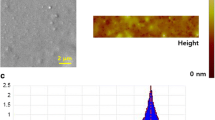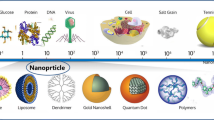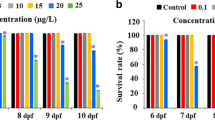Abstract
In the present work, the toxicity of three forms of graphene: pristine graphene (pG), graphene oxide (GO), and reduced graphene oxide (rGO) was investigated using a chicken embryo model. Fertilized chicken eggs were divided into the control group and groups administered with pG, GO, and rGO, in concentrations of 50, 500, and 5000 μg/ml. The experimental solutions were injected in ovo into the eggs, and at day 18 of incubation, the embryo survival, body and organ weights, the ultrastructure of liver samples, and the concentration of 8-hydroxy-2′-deoxyguanosine (8-OHdG) in the livers were measured. Survival of embryos decreased significantly after treatment with all types of graphene, but not in a dose-dependent manner. The body weights were only slightly affected by the highest doses of graphene, while the organ weights were not different among treatment groups. In all experimental groups, atypical hepatocyte ultrastructure and mitochondrial damage were observed. The concentration of the marker of DNA damage 8-OHdG in the liver significantly decreased after pG and rGO treatments. Further in vivo studies with different animal models are necessary to clarify the level of toxicity of different types of graphene and to estimate the concentrations appropriate to evaluate their biomedical applications and environmental hazard.



Similar content being viewed by others
References
Akhavan O, Ghaderi E, Akhavan A (2012) Size-dependent genotoxicity of grapheme nanoplatelets in human stem cells. Biomaterials 33:8017–8025
Bianco A (2013) Graphene: safe or toxic? The two faces of the medal. Angew Chem Int Ed Eng 52:4986–4997
Chang Y, Yang S-T, Liu JH, Dong E, Wang Y, Cao A, Liu Y, Wang H (2011) In vitro toxicity evaluation of graphene oxide on A549 cells. Toxicol Lett 200:201–210
Chen GY, Yang HJ, Lu CH, Chao YC, Hwang SM, Chen CL, Lo KW, Sung LY, Luo WY, Tuan HY, Hu YC (2012) Simultaneous induction of autophagy and toll-like receptor signaling pathway by graphene oxide. Biomaterials 33:6559–6569
Chen Y, Qi Y, Liu B (2013) Polyacrylic acid functionalized nanographene as a nanocarrier for loading and controlled release of doxorubicin hydrochloride. J Nanomater 1:1–8
Chowdhury SM, Lalwani G, Zhang K, Yang JY, Neville K, Sitharaman B (2013) Cell specific cytotoxicity and uptake of graphene nanoribbons. Biomaterials 34:283–293
Dreyer DR, Park S, Bielawski CW, Ruoff RS (2010) The chemistry of graphene oxide. Chem Soc Rev 39(1):228–240
Duch MC, Budinger GRS, Liang YT, Soberanes S, Urich D, Chiarella SE, Campochiaro LA, Gonzalez A, Chandel NS, Hersam MC, Mutlu GM (2011) Minimizing oxidation and stable nanoscale dispersion improves the biocompatibility of graphene in the lung. Nano Lett 11:5201–5207
Fraga CF, Leibovitz BE, Tappel AL (1988) Lipid peroxidation measured as thiobarbituric acid-reactive substances in tissue slides. Free Radic Biol Med 4:155–161
Gagnon ZE, Patel A (2007) Induction of metallothionein in chick embryos as a mechanism of tolerance to platinum group metal exposure. J Environ Sci Health A Toxicol Hazard Subst Environ Eng 42(3):381–387
Geim AK, Novoselov KS (2007) The rise of graphene. Nat Mater 6(3):183–191
Hamburger V, Hamilton HL (1952) A series of normal stages in the development of the chick embryo. Dev Dyn 95:231–272
Hinzmann M, Jaworski S, Kutwin M, Jagiełło J, Koziński R, Wierzbicki M, Grodzik M, Lipińska L, Sawosz E, Chwalibog A (2014) Nanoparticles containing allotropes of carbon have genotoxic effects on glioblastoma multiforme cells. Int J Nanomedicine 9:2409
Hu W, Peng C, Lv M, Li X, Zhang Y, Chen N, Fan C, Huang Q (2011) Protein corona-mediated mitigation of cytotoxicity of graphene oxide. ACS Nano 5(5):3693–3700
Janero DR (1990) Malondialdehyde and thiobarbituric acid-reactivity as diagnostic indices of lipid peroxidation and peroxidative tissue injury. Free Radic Biol Med 9(6):515–514
Jastrzębska AM, Kurtycz P, Olszyna AR (2012) Recent advances in graphene family materials toxicity investigations. J Nanopart Res 14(12):1320–1328
Jaworski S, Sawosz E, Kutwin M, Wierzbicki M, Hinzmann M, Grodzik M, Winnicka A, Lipińska L, Włodyga K, Chwalibog A (2015) In vitro and in vivo effects of graphene oxide and reduced graphene oxide on glioblastoma. Int J Nanomedicine 10:1585–1596
Kadiiska MB, Gladen BC, Baird DD, Graham LB, Parker CE, Ames BN, Basu S, Fitzgerald GA, Lawson JA, Marnett LJ, Morrow JD, Murray DM, Plastaras J, Roberts LJ, Rokach J, Shigenaga MK, Sun J, Walter PB, Tomer KB, Barrett JC, Mason RP (2005) Biomarkers of oxidative stress study II: are oxidation products of lipids, proteins, and DNA markers of CCl4 poisoning? Free Radic Biol Med 38:698–710
Kobayashi K, Tagawa S (2003) Direct observation of guanyl radical cation deprotonation in duplex DNA using pulse radiolysis. J Am Chem Soc 125:10213–10218
Kurantowicz N, Sawosz E, Jaworski S, Kutwin M, Strojny B, Wierzbicki M, Szeliga J, Hotowy A, Lipińska L, Kozinski R, Jagiełło J, Chwalibog A (2015) Interaction of graphene family materials with Listeria monocytogenes and Salmonella enterica. Nanoscale Res Lett 10:23
Lanphere JD, Rogers B, Luth C, Bolser CH, Walker S (2014) Stability and transport of graphene oxide nanoparticles in groundwater and surface water. Environ Eng Sci 31(7):350–359
Li B, Yang J, Huang Q, Zhang Y, Peng C, Zhang Y, He H, Shi J, Li W, Hu J, Fan C (2013) Biodistribution and pulmonary toxicity of intratracheally instilled graphene oxide in mice. NPG Asia Mater 5. doi:10.1038/am.2013.7
Li Y, Liu Y, Fu Y, Wei T, Le Guyader L, Gao G, Liu RS, Chang YZ, Chen C (2012) The triggering of apoptosis in macrophages by pristine graphene through the MAPK and TGF-beta signaling pathways. Biomaterials 33:402–411
Liao KH, Lin YS, Macosko CW, Haynes CL (2011) Cytotoxicity of graphene oxide and graphene in human erythrocytes and skin fibroblasts. ACS Appl Mater Interfaces 3:2607–2615
Liu J, Cui L, Losic D (2013) Grapheme and graphene oxide as new nanocarriers for drug delivery applications. Acta Biomater 9(12):9243–9257
Qiu Y, Wang Z, Owens AC, Kulaots I, Chen Y, Kane AB, Hurt RH (2014) Antioxidant chemistry of graphene-based materials and its role in oxidation protection technology. Nanoscale 6(20):11744–11755
Sanchez VC, Jachak A, Hurt RH, Kane AB (2012) Biological interactions of graphene-family nanomaterials: an interdisciplinary review. Chem Res 25(1):15–34
Sawosz E, Jaworski S, Kutwin M, Hotowy A, Wierzbicki M, Grodzik M, Kurantowicz N, Strojny B, Lipińska L, Chwalibog A (2014) Toxicity of pristine graphene in experiments in a chicken embryo model. Int J Nanomedicine 9:3913–3922
Sies H (1997) Oxidative stress: oxidants and antioxidants. Exp Physiol 82:291–295
Singh SK, Szulik MW, Ganguly M, Khutsishvili I, Stone MP, Marky LA, Gold B (2011) Characterisation of DNA with an 8-oxoguanine modification. Nucleic Acids Res 39:6789–6801
Vallabani NV, Mittal S, Shukla RK, Pandey SR, Dhakate SR, Pasricha R, Dhawan A (2011) Toxicity of graphene in normal human lung cells (BEAS-2B). J Biomed Nanotechnol 7(1):106–107
Wang K, Ruan J, Song H, Zhang J, Wo Y, Guo S, Cui D (2011) Biocompatibility of graphene. Nanoscale Res Lett 6:8
Yang K, Gong H, Shi X, Wan J, Zhang Y, Liu Z (2013a) In vivo biodistribution and toxicology of functionalized nano-graphene oxide in mice after oral and intraperitoneal administration. Biomaterials 34:2787–2795
Yang K, Li Y, Tan X, Peng R, Liu Z (2013b) Behavior and toxicity of graphene and its functionalized derivatives in biological systems. Nanotoxicology 9:1492–1503
Yang K, Wan J, Zhang S, Zhang Y, Lee ST, Liu Z (2011) In vivo pharmacokinetics, long-term biodistribution, and toxicology of PEGylated graphene in mice. ACS Nano 5:516–522
Zhang X, Hu W, Jing Li J, Tao L, Wei Y (2012) A comparative study of cellular uptake and cytotoxicity of multi-walled carbon nanotubes, graphene oxide, and nanodiamond. Toxicol Res 1:62–68
Zhang X, Yin J, Peng C, Hu W, Zhu Z, Li W, Fan C, Huang Q (2011) Distribution and biocompatibility studies of graphene oxide in mice after intravenous administration. Carbon 49:986–995
Zhang Y, Ali SF, Dervishi E, Xu Y, Li Z, Casciano D, Biris AS (2010) Cytotoxicity effects of graphene and single-wall carbon nanotubes in neural phaeochromocytoma-derived PC12 cells. ACS Nano 4:3181–3186
Acknowledgments
This work is part of the first author’s habilitation thesis, and it was supported by the Polish National Research Council grant NCN OPUS 2011/03/B/NZ9/03387.
Author information
Authors and Affiliations
Corresponding author
Ethics declarations
Conflict of interest
The authors declare that they have no conflict of interest.
Additional information
Responsible editor: Markus Hecker
Rights and permissions
About this article
Cite this article
Szmidt, M., Sawosz, E., Urbańska, K. et al. Toxicity of different forms of graphene in a chicken embryo model. Environ Sci Pollut Res 23, 19940–19948 (2016). https://doi.org/10.1007/s11356-016-7178-z
Received:
Accepted:
Published:
Issue Date:
DOI: https://doi.org/10.1007/s11356-016-7178-z




